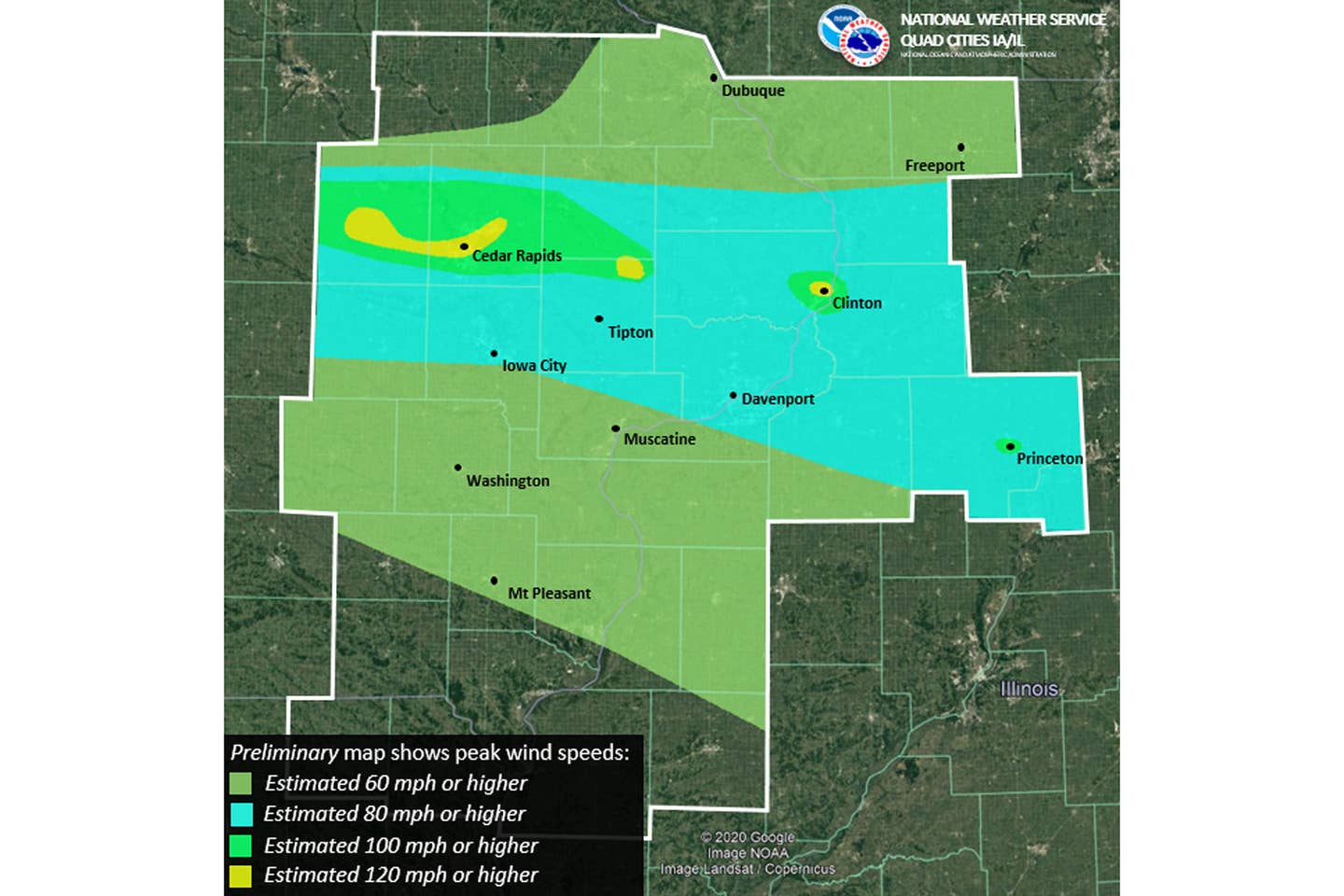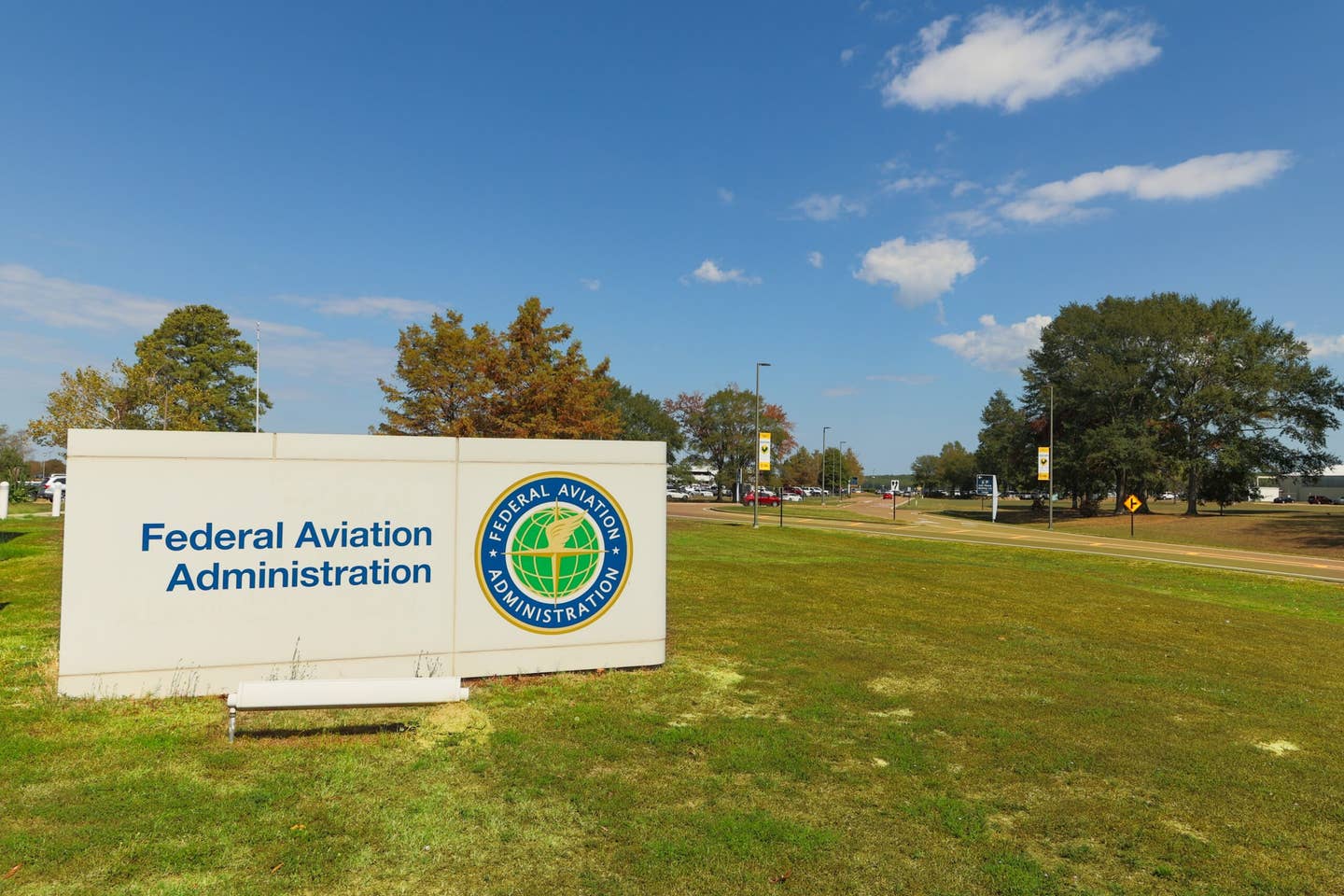
The plot of the derecho’s wind intensity shows the depth of the storm’s rage over Central and Eastern Iowa. Courtesy NOAA/NWS Quad Cities
Cedar Rapids, Iowa, stood in the gunsight of an awesome derecho storm that hit the state on Monday, August 10, in the early afternoon hours. A derecho, usually associated with rapidly-moving bow-echo or squall-line thunderstorms, packs immense straight-line winds, often in excess of 100 mph—and it remains far more difficult for meteorologists to predict than garden-variety cells and tornadic rotation.
The derecho laid waste to millions of acres of cropland, including much of the corn fields nearing harvest—but it took a real human toll in Cedar Rapids, as it destroyed trees on nearly every property in town, leaving some without power, cell service, or Internet for days following the blast. Sustained winds clocked above 100 mph—some estimated to be as high as 140 mph—for up to 40 minutes without abating, damaging structures that would normally be able to withstand an intermittent pounding.
The Marion Airport (C17) took the storm particularly hard, with hangars caved in and airplanes tossed around like toys. LuxAir Aviation, the FBO at Marion, posted this update on its Twitter account on August 12: “Working through cleanup at Marion Airport. Hangars and planes sustained quite a bit of damage. We are still without power but serving customers best we can. Debris is cleared, Runway is open and we hope to have fuel pumps running soon.” Power was restored on August 17, a week after the storm.
South of Cedar Rapids—on the south side of Iowa City—the Iowa City Municipal Airport (KIOW) escaped the greater damage suffered to the north. The FBO began towing airplanes into hangars about 30 minutes before the storm hit—demonstrating how little warning the area had—and fortunately all hangars remained standing. Only a couple of trees fell, blocking the entrance at Riverside Drive, and there was an overnight power and Internet outage.
“We did see one plane fly out, maybe 15 minutes before [the storm] hit,” said Matt Clover, an Iowa City-based pilot. “It was a little ominous seeing the white silhouette of the plane against a black sky. It got super dark here as it approached.”

Sign-up for newsletters & special offers!
Get the latest FLYING stories & special offers delivered directly to your inbox






